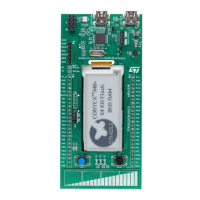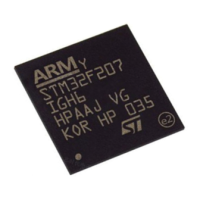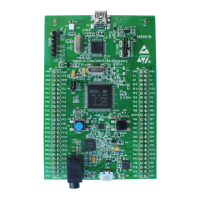5.4 Sensitivity
Sensitivity is a key point in touch sensing applications. The sensitivity can be improved by:
• Reduce air gap
• Reduce panel thickness
• Choose dielectric with higher ε
R
• GND plane must not too close from shield and sensors
• Avoid metallic paint near shield and sensors
Table 5. Sensitivity documentation gives a list of documents containing information about the sensitivity.
Table 5. Sensitivity documentation
Id Title Chapter
AN1913
Developing applications on STM32Cube with
STMTouch® touch sensing library
GPIO mode (table)
AN4312
Guidelines for designing touch sensing applications
with surface sensors
Air Gap:
• Reduce air gap
Changing the Panel material:
• Reduce Panel thickness
• Choose dielectric with higher ε
R
Metal chassis:
• GND not too closed from Shield and Sensors
• Avoid Metallic paint near Shield and Sensors
Mechanical construction and PCB to panel bonding.
Surface sensor design
AN4316 Tuning a STMTouch-based application All chapter
Dielectric example
Table 6. Dielectric constants of common materials used in a panel construction
Material
ε
R
Air 1.00059
Glass 4 to 10
Sapphire glass 9 to 11
Mica 4 to 8
Nylon 3
Plexiglass 3.4
Polyethylene 2.2
Polystyrene 2.56
Polyethylene terephthalate (PET) 3.7
FR4 (fiberglass + epoxy 4.2
PMMA (Poly methyl methacrylate) 2.6 to 4
Typical PSA 2.0 - 3.0 (approximately)
AN5105
Sensitivity
AN5105 - Rev 1
page 10/52

